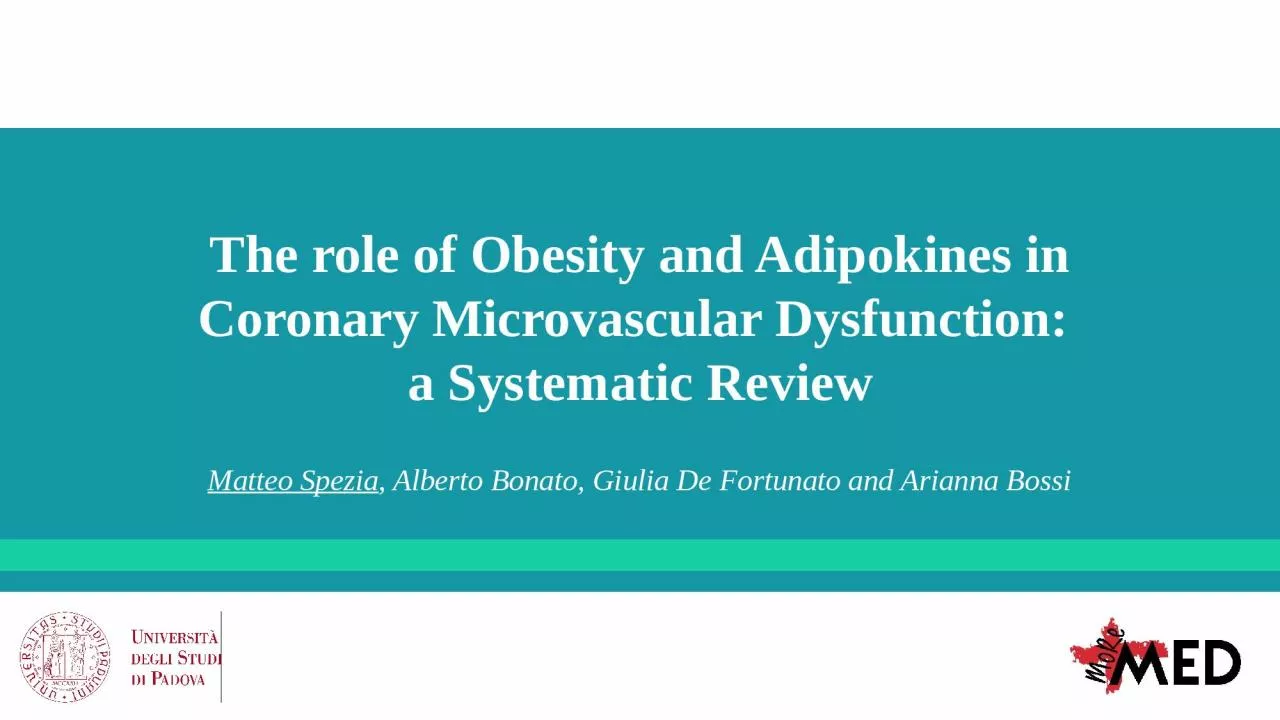PPT-The role of Obesity and
Author : hadly | Published Date : 2022-06-18
Adipokines in Coronary Microvascular Dysfunction a Systematic Review Matteo Spezia Alberto Bonato Giulia De Fortunato and Arianna Bossi Introduction Obesity
Presentation Embed Code
Download Presentation
Download Presentation The PPT/PDF document "The role of Obesity and" is the property of its rightful owner. Permission is granted to download and print the materials on this website for personal, non-commercial use only, and to display it on your personal computer provided you do not modify the materials and that you retain all copyright notices contained in the materials. By downloading content from our website, you accept the terms of this agreement.
The role of Obesity and: Transcript
Download Rules Of Document
"The role of Obesity and"The content belongs to its owner. You may download and print it for personal use, without modification, and keep all copyright notices. By downloading, you agree to these terms.
Related Documents














